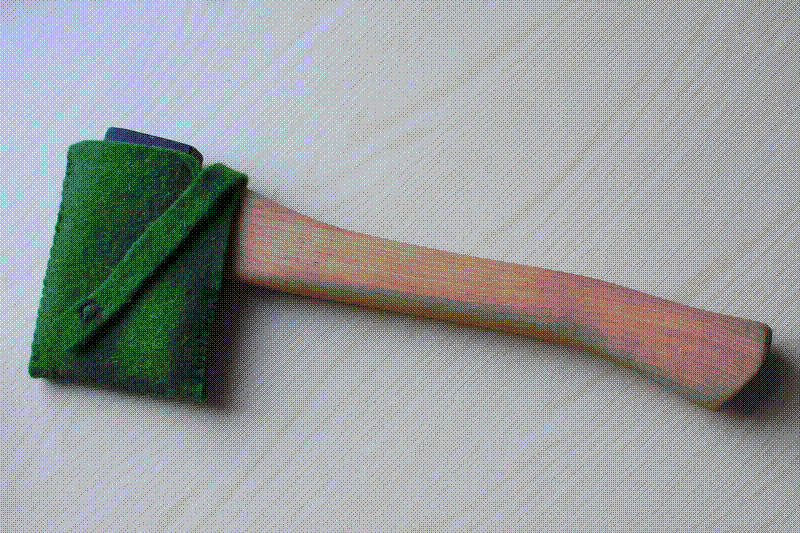A neighbour of ours has recently cleaned out his father’s garage, which was full to the brim with tools and parts, but his father is now too frail to do much in his workshop anymore. I’ve been looking for a small hatchet that I could use for whittling for some time now, so I was lucky to be offered one of the many axes that had emerged from the shed.
The axe is only small, about a foot from the handle to the top of the blade. I don’t know what brand it is but I don’t think it’s anything special. It had been seriously abused. There were a few chips out of the top of the blade where it had clipped the ground, probably while splitting kindling and the blade was also very rounded where it had been sharpened badly. For whittling I wanted quite a steep angle on the blade and it needed to be very sharp, so I set to work trying to reshape it.
Firstly, I used a grinder to reset the edge. This got rid of the chips at the top and restored the rounded-ness of the blade profile. I only used the grinder for about 5 seconds at a time to avoid overheating the blade, which can make the metal go brittle.
Next I clamped the axe and used a series of files to reshape the angle of the blade. This part took the longest and also took quite a lot of elbow grease.
After that I switched to a stone wheel that runs through a water bath to create the initial edge. I had to go back and forth between the files and the stone wheel a few times before I was happy with the consistency of the angle on the blade.
Finally to finish it off I used a leather honing wheel with a dab of honing paste that is normally used to hone woodturning chisels.

I used a thick piece of felt normally used to cover old fashioned card tables to make a sheath for the axes, just to keep the edge safe.
I cut a long rectangle twice as long as the length of the blade from front to back and as tall as the blade. Then I doubled up the rectangle and sewed up the top. I cut a felt ribbon and attached a popper button to wrap around the back of the collar of the axe to keep the sheath on.

To recondition the handle I sanded it down, going up to 800 grit paper, then gave it 3 coats of linseed oil, which helps to weather proof the wood and keep it supple.
